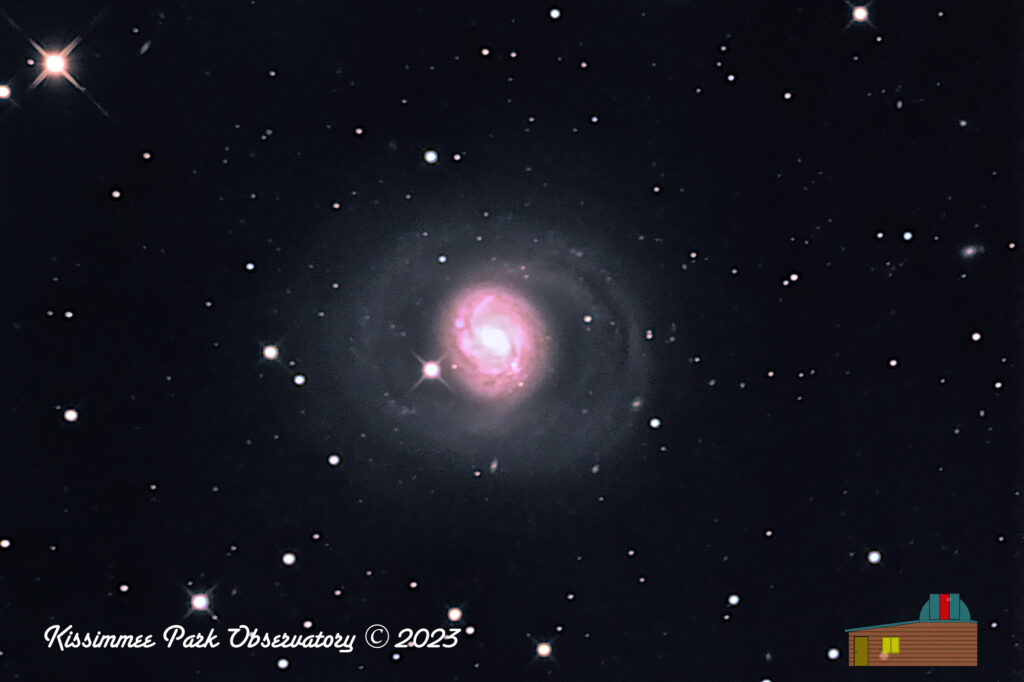Exploring the Marvels of Messier 77: The Enigmatic Cetus A
The universe is a treasure trove of celestial wonders, each with its own unique story and captivating features. Among these, Messier 77 stands out as a prominent enigma. Also known as Cetus A, this mysterious galaxy located in the constellation Cetus has intrigued astronomers for centuries.
A Brief Overview
Messier 77 is a barred spiral galaxy situated approximately 47 million light-years away from Earth. It was first discovered by the French astronomer Pierre Méchain in 1780 and later cataloged by Charles Messier. With a diameter of around 170,000 light-years, it is comparable in size to our Milky Way galaxy.
Distinctive Features
1. Barred Spiral Structure: One of the most striking features of Messier 77 is its barred spiral structure. A prominent elongated bar runs through the core of the galaxy, surrounded by spiral arms that extend outward. This unique formation sets it apart from regular spiral galaxies, making it a captivating subject for study.
2. Active Galactic Nucleus (AGN): Messier 77 is classified as an AGN, which means it hosts a supermassive black hole at its center. This black hole actively accretes matter, emitting intense radiation and energy. The AGN in Messier 77 is believed to be one of the most energetic in the nearby universe. The process of matter accretion and the resultant emission of radiation make AGNs intriguing objects of research and observation.
3. Starburst Activity: Alongside its AGN, Messier 77 exhibits intense starburst activity within its spiral arms. Starburst galaxies experience a rapid formation of new stars, often triggered by interactions or mergers with other galaxies. The combination of an AGN and starburst activity makes Messier 77 an intriguing cosmic laboratory for studying the interplay between black hole activity and star formation.
Scientific Significance
Messier 77 has been a subject of extensive study and observation by astronomers aiming to understand the dynamics of its AGN and starburst activity. The presence of an active nucleus and intense star formation provides valuable insights into the mechanisms behind galaxy evolution, including the formation and growth of supermassive black holes.
In recent years, researchers have employed various advanced telescopes and instruments, such as the Hubble Space Telescope and the Chandra X-ray Observatory, to capture detailed images and spectra of Messier 77. These observations have allowed scientists to study the galaxy’s intricate structure, gas dynamics, and the interaction between its central black hole and surrounding matter.
Conclusion
Messier 77, or Cetus A, continues to captivate astronomers and space enthusiasts alike with its intriguing features and scientific significance. Its unique barred spiral structure, active galactic nucleus, and starburst activity make it a cosmic marvel worth exploring. As our understanding of this enigmatic galaxy deepens, we can expect further revelations about the fundamental processes that shape galaxies and the cosmos as a whole.
Image Info
- Imaged from KPO, in Saint Cloud, Florida
- Camera : ZWO ASI2600MM Pro
- Scope: Orion RC-12 Ritchey-Chretien Astrograph, 2450mm fl, F/8
- Mount: iOptron CEM-120
- Luminance: 57 subframes of 300s = 285 min integration
- Red: 24 subframes of 300s = 120 min integration
- Green: 22 subframes of 300s = 110 min integration
- Blue: 21 subframes of 300s = 105 min integration
- Total integration time: 620 min = 10.3 hours.
- Captured via ASIAir Pro automation
- Optical tracking via ASIAir automation via the ASI120MM-S guide camera
- Separate channels stacked and LRGB integrated in Astro Pixel Processor
- Image cropped and stretched in Nebulosity.
- Image run through Super DeNoising
- Final processing in Aperture

